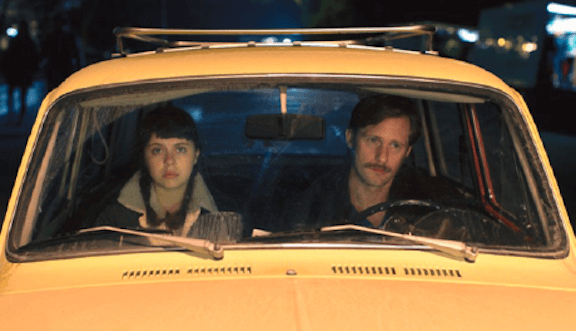The Diary of a Teenage Girl, which opens in Los Angeles and New York on August 7, is about sex. More specifically, it’s about a feverish waking sex dream: that riptide of deep physical and emotional longing that washes over adolescents cum teenagers just when they’re painfully piecing their identity together. Something like it happens to each of us between middle and high schools. We sprout hair and boobs, despise and glorify ourselves, angrily, joyfully, stupidly thrash around the emotional waves and physical pleasures that are newly available. Parents of teenagers who see the sex tsunami coming watch it with conflicting emotions of fight or flight, but are mostly just left on the proverbial shore hoping their kid won’t drown.
In Diary the teenager caught in the waves is 15 year old Minnie, expertly captured by Bel Powley. The washing machine agitator of emotions she steps into is particularly potent. She’s being raised by a fun-loving, somewhat lost, divorced mom, Charlotte, well played by Kristen Wiig. Her remote robotic father Pascal – Christopher Meloni – is so discomforted by anything human that he advises Charlotte to stop touching Minnie, lest the contact become too sexualized. And she’s growing up in San Francisco in the mid-1970s, possibly one of the most chaotic, sexy, and just plain gorgeous times in the City’s history, a period in which San Francisco itself was being tossed by the waves of cultural change.
Dropped into this stew like so much tasty meat is Monroe, Alexander Skarsgard, Charlotte’s boyfriend. Pretty much anyone, man or woman, between the ages of 15 and 85, would want to sleep with Monroe, what with his cute mustache, lean body, and chillaxing demeanor. And, of course, Minnie does. Repeatedly. Along the way she falls down a rabbit hole of sex, drugs, and parental conflict, emerging sometime later more or less intact. Just like most of us do.
Diary captures a number of elements perfectly, ones that continue to ring true in the current generation. Minnie starts her affair with Monroe deeply ambivalent, driven as much by the worry that she’ll never get another chance to sleep with him, or anyone, as she is by the actual desire to do so. In an early conversation she asks him what his favorite color is, a question that echoes a more innocent age, but which Monroe, in all his permanent boyhood charm, picks up again mid-affair. The crude ancestors of today’s Snapchat are every bit as important in the identity development journey – and its dead end alleyways, risks, and egocentricity – as the more modern versions are today: tape recorders, typewriters, telephones, and photographs.
San Franciscans will delight in, yet again, seeing our beloved City used as a key character, though some of the street scenes are hard to place. Old-time Potrero Hillians will recognize Monroe’s “apartment” as the deceased community activist’s Babette Drefke’s house, across the street from Downtown High School. Those who knew Drefke might think she’d have been more likely to chase Monroe off with a broom than rent her home to him.
Towards the end of the film Minnie tells herself that while nothing’s changed, everything looks different. The same may be true for viewers. I wouldn’t want my 14 year old daughter to watch this movie, and to some viewers it may seem like a horror show. But it’s also an enjoyable ride that may reawaken audience members to things they thought were lost during that hallucinogenic period called youth. We all surf those waves; most of us live to tell the tale.




